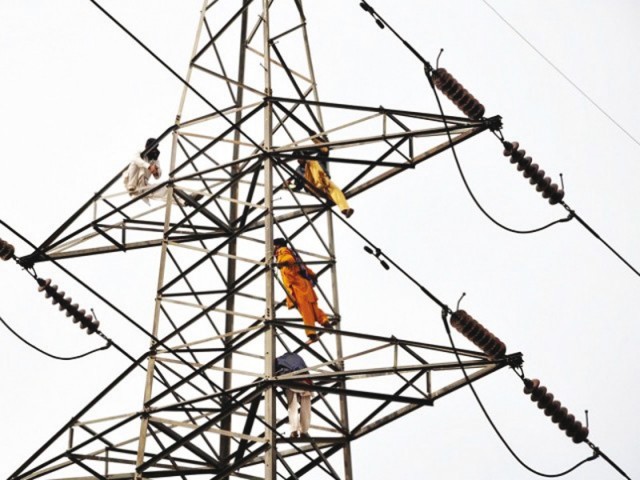ISLAMABAD: Pakistan experienced a massive power outage early Monday due to a failure in its national electricity grid. Power was out in all of the country’s major cities, including Karachi, Islamabad, Lahore, and Peshawar, confirmed the energy ministry.
Though Minister for Power Khurram Dastgir Khan gave a deadline of 10:00 pm for full restoration of power supply, the authorities failed to meet the deadline and most cities and towns of the country remained without power on a cold winter night.
Though the power restoration process started in the federal capital around 7:34 pm after a 12-hour shutdown, other cities of the country were still facing a complete blackout by midnight.
The ministry in a statement, said that the grid “experienced a loss of frequency that caused a major breakdown,” at around 07:30 am local time, and that work was underway to restore the system.
In an interview, the minister of energy Khurram Dastagir explained what happened. “In winter, the demand for electricity reduces nationwide, hence, as an economic measure, we temporarily close down our power generation systems at night.” But when the power plants were restarted on the morning of January 23, “frequency variation and voltage fluctuation,” were discovered in southern Pakistan, “somewhere between Dadu and Jamshoro,” he said. Consequently, this led to the “power generating units to shut down one by one.”
What is the frequency?
When you turn on an appliance, such as your kettle or laptop charger, it is powered by an alternating current. This indicates that the electricity alternates between positive and negative voltage. This back-and-forth motion, or “oscillation,” is referred to as electrical frequency.
Grid frequency, measured in Hertz (Hz), is a technical term that refers to the number of times the alternation cycle occurs every second. Currently, 50 Hz is the most prevalent frequency used in the bulk of the world’s power systems, including Pakistan’s.
Because the equipment in your house, factory, or office is designed to run at 50 Hz within a narrow tolerance, maintaining the frequency of our power supply is critical. This is the reason why everyone turns their appliances off when there’s a fluctuation in the voltage or frequency of electricity. If this isn’t done there’s a possibility of equipment and appliances being damaged.
The issue is that frequency can be difficult to control; if the exact amount of electricity needed is not matched by generation, the frequency of the electricity on the grid can be affected.
If there is more demand for electricity than supply, for example, the frequency will reduce. When there is an excess of supply, the frequency rises. To make matters even more complicated, the margin of error is extremely narrow.
What happens when frequency drops?
While talking to Profit sources from the power division explained that “as per initial findings, the issue surfaced around 07:34 am due to disruption in the frequency of the national grid which caused a major breakdown.”
The sources further elaborated that, “the frequency was reduced due to a fault in the Guddu-Quetta transmission line while other reasons and issues behind the fault are being determined.”
The frequency reduces if we feed in too little to meet demand. To avoid power outages, the automatic load-shedding strategy is activated when this occurs. This is due to the fact that if the frequency falls too low, the power plants shut down one by one until the grid completely fails.
This is what seems to have happened in the case of the recent power blackout. The demand was higher than the generation of the grid which led to a domino effect causing power plants to trip and disconnect from the grid to save expensive power generation equipment.
At the same time, some sources on the basis of anonymity claimed that the issue arose when the government made an effort to increase the contribution of thermal power into the grid since the generation from hydel electricity was falling.
What did the government do?
Initially, all the provinces are experiencing power outages. Areas including Karachi, Lahore, Faisalabad, Toba Tek Singh, Sargodha, Shore Kot, Pir Mahal, Mukran, and Dera Ghazi Khan were facing a power breakdown.
To summarise it, the entire provinces of Sindh and Balochistan had no power, or have it intermittently. Regions in south Punjab and Khyber Pakhtunkhwa are also experiencing blackouts.
The national regulator was making efforts to reassume uninterrupted power to consumers. According to a statement from the National Electricity Power Regulatory Authority (NEPRA), “[It] has taken serious notice of the country-wide power breakdown and has directed National Transmission and Despatch Company (NTDC) to submit a detailed report in this regard.”
Furthermore, in its statement the regulator ensured that the blackout was not its fault since, “[It] has previously imposed fines on similar tripping, partial/full blackout(s), system collapse(s), tower collapse(s) in the year 2021 & 2022 and has consistently issued directives and recommendations on mitigating such events as well.”
Additionally, the power division also issued a statement saying that “work on the restoration of electricity has been initiated and at present, it is in full swing as few grid stations of IESCO and PESCO are being restored in phase wise to avoid more losses.”
Even though the energy minister has claimed that energy will be restored within 24 hours, sources say that that is unlikely given the magnitude of the issue, adding that it might take up to 48 hours to ensure uninterrupted electricity supplies to all areas.
While talking to Profit, the source also stated that the government’s efforts to restore the supply of electricity is facing unprecedented issues which are aggravating the situation further.
According to a tweet from Dastgir “electricity is restored partially in distribution companies Islamabad, Peshawar, Quetta, Multan, and Sukkur.”
Although work is underway to restore the national grid, the exact reason for the breakdown is still unclear. Further statements and reports are expected to clarify this issue and potentially prevent it from happening in the future.
— Asad Ullah Kamran contributed reporting























